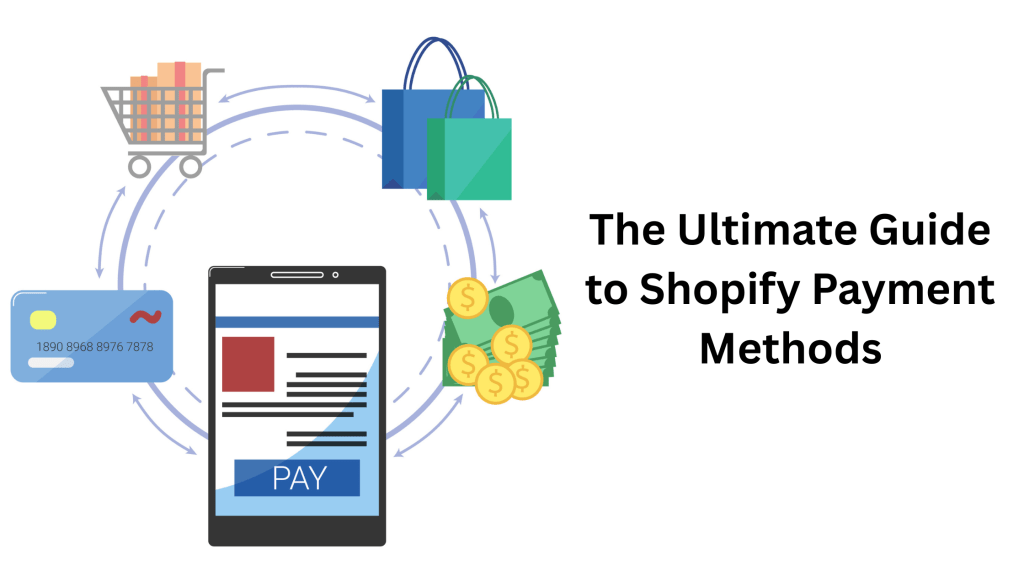Are you thinking about starting or scaling an online store with Shopify? If so, you’re probably asking: “Which Shopify payment methods should I use?” Selecting the right options isn’t just about ticking boxes—it can boost sales, reduce abandoned carts, and save money.
This guide explores popular modes of Shopify Payments for 2025, answering all the questions of e-commerce business owners. This guide is perfect for businesses investing in Shopify development services.
Why Payment Methods Matter in Ecommerce
Let’s start with a simple question: Why does this even matter? Fast and trusted payment options directly influence:
- Conversions: Offer too few or too slow methods? A staggering 70% of carts get abandoned.
- Fees: Payment processors can hit 2–3% per transaction—eat away at your margins fast.
- Global Reach: Want to sell abroad? You’ll need localized wallets and multi-currency support.
In 2025, consumers expect fast checkout, currency choice, and seamless mobile payments. Choosing the right mix of Shopify payment methods sets the stage for store success.
What Is Shopify Payments?
Shopify Payments is Shopify’s in-house gateway solution, powered by Stripe. It requires no plugins or extra setup—just click “activate” in Settings > Payments, and you’re ready. It supports credit cards, digital wallets (Apple Pay, Google Pay), and Shop Pay. Plus, there are no extra third-party transaction fees when you use it.
Key Advantages of Shopify Payments
- Built-in fraud protection, analytics, and fast reporting.
- Seamless experience integrated with Shopify dashboard.
- Lower fees—Shopify charges an additional 2% for third-party gateways.
Major Drawbacks of Shopify Payments
- Limited availability. Only available in Shopify-supported countries.
- It is not accurate for every niche; some industries aren’t supported.
How Shopify Payments Compare to Third-Party Gateways
In 2025, Shopify Payments will process nearly 90% of transactions on the platform, handling over $137 billion in GMV in 2023, up 29% from 2022.

Popular Third-Party Payment Gateways to Use with Shopify
Even though Shopify’s personal Payments option is a solid all-in-one solution, many merchants still add third-party payment gateways to cover more ground—especially when targeting international customers, offering subscription models, or giving buyers the choice they crave.
Let’s examine some of the most trusted and widely used third-party Shopify payment methods that pair seamlessly with Shopify and understand when and why you should consider them.
#1 Stripe – For Tech-Savvy Brands & Subscriptions
Stripe is a big favourite among developers and SaaS businesses. It’s highly customizable, subscription-ready, and offers advanced authorization options. Whether you’re selling digital downloads, memberships, or services, Stripe allows you to shape your checkout flow to match your brand’s vibe.
Why use Stripe with Shopify?
- Comes with robust API support
- Transparent fees and real-time reporting
- Super easy to handle recurring payments
- Seamless integration for Shopify Plus users
- Supports international currencies and payment methods
Ideal for: Tech brands, subscription boxes, and stores that need detailed checkout control.
#2 PayPal – The Trust Badge You Can’t Ignore
PayPal is non-negotiable for many customers, especially in the US, UK, and Europe. Thanks to PayPal’s buyer protection policies and familiar one-click login, shoppers often feel safer using PayPal. Over 426 million active users globally used PayPal in 2024, and it’s still one of the top three preferred methods for online shopping in the West.
Why use PayPal with Shopify?
- Recognized & trusted globally
- Offers PayPal Credit for buyers
- Works great as an express checkout option
- Comes with Buy Now, Pay Later (BNPL) options
- Helps increase conversion rates, especially for mobile users
Ideal for: Every store—seriously, don’t skip it. Not offering PayPal can lead to lost sales.
#3 Klarna & Afterpay – BNPL for Bigger Carts and Gen-Z Buyers
Buy Now, Pay Later (BNPL) is no longer a buzzword. It’s become a mainstream way of shopping, especially with Gen Z and Millennial customers. Klarna and Afterpay lead the BNPL scene in the US, EU, and Australia, and they are integrating nicely with Shopify. In fact, a Shopify study showed that stores using BNPL saw an increase in average order value.
Why offer Klarna or Afterpay?
- Boosts impulse purchases
- Available in multiple currencies
- Split payments without interest
- Appeals to budget-conscious and younger buyers
- Can be added as a Shopify payment method or app
Ideal for: Fashion, electronics, home décor, or anything above $50.
#4 Amazon Pay, Square, & Authorize.Net – Diverse and Dependable
Let’s not forget these silent warriors. Each serves a slightly different audience:
Amazon Pay
- High trust factor
- Lightning-fast checkout
- Leverages existing Amazon accounts
- Great for stores with high mobile traffic
Square
- Ideal for businesses with both online and offline (POS) presence
- Syncs physical store and Shopify inventory
- Strong in the US and Canada
Authorize.Net
- Known for solid fraud protection tools
- Works well for B2B, high-volume businesses
- One of the oldest gateways—now backed by Visa
- Allows for advanced payment control and recurring billing
Ideal for: Hybrid businesses, older demographics, and industries that need extra fraud checks.
And remember, you can combine multiple payment gateways in Shopify to cover your bases. You could enable Shopify Payments for credit cards, PayPal for trust, and Klarna for BNPL—all at the same time. That’s the beauty of Shopify: flexibility and user-first design.
Avoid Common Ecommerce Payment Pitfalls
It’s more than just turning things on:
- Currency conversion – Let customers see local prices.
- Returns & refunds – Ensure seamless fund reversal options.
- Higher security – Enable 2FA, PCI compliance, and fraud protection.
- Transparent pricing – Make fees visible. Surprise costs = abandoned carts.
- Customer support – Multiple payment options = multiple needs. Be prepared.
How Can Professional Shopify Development Services Help
Even “simple” payment setups benefit from expert attention:
- API tweaks for UX consistency
- Multi-currency or multi-store sync
- Custom integration of Stripe or Klarna
- PCI and compliance across gateways
- A/B testing checkout flows for conversion lift
Startups or mid-size brands investing in Shopify should work with a dev agency to fine-tune these systems and maximize ROI.
The Future of Shopify Payments in 2025
- Crypto support via stablecoin options
- Advanced fraud detection powered by AI
- Global wallets and real-time currency conversions
- Faster payouts (daily instead of 2+ days) as fintech evolves
- Embedded finance: Shop Pay Installments, loyalty + payment ecosystems
If you’re building with these trends in mind, you’ll stay two steps ahead of competitors.
Wrapping Up
Choosing your Shopify payment methods in 2025 matters—it impacts conversions, costs, and user trust. Shopify Payments remains your best in-house option where available. But diversifying with PayPal, Stripe, BNPL, and digital wallets unlocks growth in western markets.
For advanced setups, multi-currency, subscriptions, and global expansion, your Shopify development partner, Webiators Technologies, can transform your checkout from good to great. Ready to get paid smarter? Build your future with flexibility, trust, and fast conversions. Let your payment methods do the selling for you!
FAQs
Ans: Shopify Payments is the built-in gateway. Shopify payment methods include all checkouts, such as PayPal, Klarna, and Amazon Pay.
Ans: Absolutely! Use it as primary and add PayPal for buyer trust and diversity.
Ans: Yes, Shopify charges 2% on third-party gateways plus the gateway’s own fees. The inbuilt option avoids that extra cost.
Ans: They fine-tune checkout UX, integrate global payment gateways, ensure compliance, and use data tracking to reduce friction.


